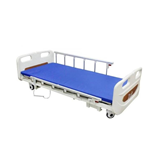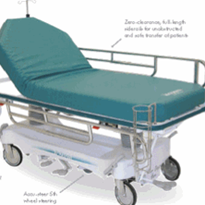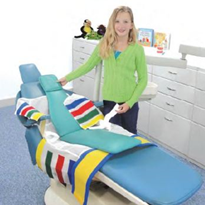Many patients experience a decrease in quality of life for years after initial treatment. These problems often originate during the patient’s ICU stay where they are immobile for long periods of time.
Immobility in the ICU is associated with muscular atrophy, delirium, pulmonary issues, skin breakdown, bacterial infections, and depressive moods. Overall, these complications hinder recovery in patients, increase cost of treatment, and in some cases, become life threatening.
A range of complications that increase cost of care and length of stay can result when patients do not meet mobility goals:
- Respiratory complications can mean an increase of 10-11 days of ICU LOS
- Neurological complications can increase annual incremental cost of care by up to $60K per 100 beds
- Stage III and IV pressure injuries can increase cost by up to $43K per 100 beds
- Up to 50% strength loss within the first 3-5 days
Early mobility is a key part of the ICU Liberation Bundle, also known as the ABCDEFG Bundle. This is an evidence-based guide that is used to promote the assessment, prevention and integrated management of patients in the ICU. Together these components can decrease delirium, improve pain management and reduce long-term consequences for ICU patients. The early mobility element, in particular, is designed to improve patient outcomes such as ventilator-free days and length of stay.
How to help patients achieve early mobility
Many patient- and hospital-related barriers to early mobility can be overcome through technology, staff support and education, hospital protocols and communication.
Patient related barriers
Hemodynamic instability is the most common patient-related barrier to mobilization. Other barriers include respiratory instability, tubes, drains, and treatment related factors. Protocols with inclusion and exclusion criteria for mobility can help standardize mobility practices based on clinical evidence and respond to mobilization activities.
ICU cultural barriers
Staff may not view early mobility as a priority in the daily care of the ICU patient. Sharing literature, videos and education may help. Collaborative goal making and inter-professional involvement can also lead to changes in mobility decision making.
Process-related barriers
Mobility screening for appropriate activities may be delayed or missed. Differences in assessment for mobility readiness and lack of communication between care providers may also disrupt or delay mobility activities. Regular communication, such as inter-professional meetings, and improved clinical documentation can also aid in collaboration and be used to better evaluate patient progress.
How technology can help
Overhead and mobile lift systems, such as the Likorall® overhead lift, can enable care providers to safely move patients on their own, without strain and while keeping patients in the appropriate position.
Bed systems with continuous lateral rotation therapy of 90-degrees, or lung-over-lung, and percussive and vibration therapy can help prevent complications from immobility. The Progressa® bed system incorporates these key features and further supports early mobility through flexible angles and positions, including chair egress, to aid in physical therapy
Lung expansion therapy can also help reduce respiratory complications up to 50% post-surgery and decrease ICU and hospital length of stay (LOS).The MetaNeb® System combines oscillation and lung expansion (OLE) therapy with aerosol delivery into a single, integrated therapy cycle. By reducing therapy time to as little as 10 minutes, the MetaNeb® System maximizes efficiency for clinicians and patients.
Benefits of an early mobility program
A comprehensive early mobility program can also significantly enhance patient outcomes. The Progressive Mobility® Program, integrated with ICU bed systems and patient lifts may lead to
- 36% reduction in ICU LOS
- 33% reduction in overall hospital LOS
- 46% reduction in ventilator days
- 30% reduction in overall hospital costs
Summary
Early mobility can positively impact patient recovery in the ICU. Unfortunately, factors such as patient, structural, process-related, and cultural factors may delay mobility, impacting patient recovery. Early mobility and risk of complications can be improved by the implementation of safety standards, proper equipment, and monitoring systems.



-160x160-state_article-rel-cat.png)














-205x205.jpg)






